CZ 2006 Lists Begin: A Cryptomundo Roundup
Posted by: Loren Coleman on November 29th, 2006
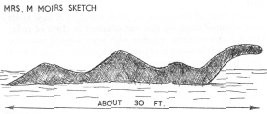
Cryptozoology, in various overt and covert ways, is all over the news this last week in November 2006, as people appear to be getting a headstart on their end of the year lists. Here’s a snappy overview of the first wave.
First, a calm and quiet honor you may have missed. Stanley Newman is the editor of the Newsday Crossword and author/editor of nearly 100 books on crosswords, word games and trivia. On November 29, 2006, Newman picked his:
Word of the week: "cryptozoology." It is the study of creatures whose existence is as yet unproved. Cryptozoological subjects include the Loch Ness monster and the Abominable Snowman.
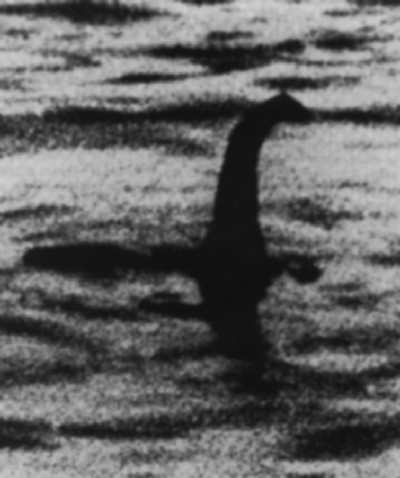
Meanwhile, on this same day, the UK’s Daily Mail (yes, the same paper responsible for the famous 1954 expedition in search of the Abominable Snowman) published their survey of the Scottish Most Famous Top Ten. Their choice for the #1 most famous Scot is Nessie or the Loch Ness Monster. Robert Burns is #2, and Sean Connery, #3.
On November 28, 2006, the Guardian published the Top 100 eco-heroes that a panel of experts named for the Environment Agency as those who have done the most to save the planet.
The all-time list has as their #1, none other than Rachel Carson, a Maine summer resident, who died at the young age of 56, two years after her 1962 book, Silent Spring kick-started the modern environmental movement. There choices were anything but modern, as their picks include St Francis of Assisi (1182-1226) and Siddartha Gautama Buddha, who died in 483 BC.
A triad of individuals known as extremely important to cryptozoology are also on this eco-heroes list. They are (with my notes on the three’s cryptozoology-oriented lives):
At #21 is Sir Peter Scott, well-known British ornithologist, conservationist and painter, who had led several ornithological expeditions worldwide. Late in his life, he became a television personality, popularizing the study of wildfowl and wetlands. Sir Peter also was a supporter of the search for the Loch Ness Monster. After several successful 1970s photographic and sonar findings by the Academy of Applied Sciences, Sir Peter announced in 1975 that the scientific name of the monster would henceforth be Nessiteras rhombopteryx, which is Greek for "The Ness monster with diamond-shaped fin." This allegedly enabled Nessie to be added to a British register of officially protected wildlife, although that is disputed today. Ridicule followed quickly when London newspapers noted that Nessiteras rhombopteryx is an anagram of "monster hoax by Sir Peter S." Nessie searcher and cryptozoologist Robert H. Rines replied that the letters could also be rearranged to spell: "Yes, both pix are monsters–R."
Please click to enlarge this image of Bigfoot as drawn by Paul Smith.
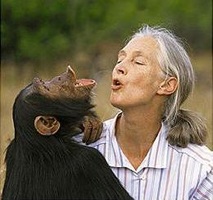
At #48 is Jane Goodall, primatologist. She has become a high-profile supporter of Sasquatch research in the last half-decade, stimulating interest in the Willow Creek symposium (even though she cancelled her appearance at the last moment), and endorsing Jeff Meldrum’s new book.

Then at #59 is Gerald Durrell, an author, famed zoologist and adventurer-cryptozoologist.
Durrell was a close friend, from their school days, of Ivan T. Sanderson and Ralph Izzard, and seems to have known Tom Slick.
In my recent "James Bond and Cryptozoology" blog, I mentioned the fraternity that existed back then.
In that same crowd was Gerald Russell, a member of the Izzard-led 1954 trek and the first leader of the 1958 Slick-Johnson Snowman Expedition to eastern Nepal, who had a long-lasting impact on the methods used in pursuit of cryptids, via small groups or pairs of searchers as opposed to large, noisy, clumsy expeditions of the past.
Thanks to Steve Thomas for his hint to the U.K.’s Environment Agency top 100 list.
Finally, for today, Frommer’s travel guides has come up with their Top 12 World Travel Destinations for 2007, which are "surprising, thriving or emerging." The list includes some nice links to cryptozoological hotspots. Here’s their list:
1. Krakow, Poland
2. Tokyo, Japan
3. Minneapolis, Minnesota
4. Panama
5. Asheville, North Carolina
6. Ethiopia
7. Portland, Oregon
8. Virgin Gorda, British Virgin Islands
9. Okanagan Valley, British Columbia
10. Glen Canyon, Utah
11. Zurich, Switzerland
12. Portland, Maine
While connections to our favorite topic might be found in all of these locations above, three are strong cryptozoology destinations.
Let me start with #12, Portland, Maine, my hometown for the last 23 years, sits on beautiful Casco Bay, the marine habitat of the local sea serpent, Cassie. The International Cryptozoology Museum is here too (re-opening in 2007, when the Bates College traveling exhibition returns to Maine). Black panthers sightings, Native American encounters with Thunderbirds and Windigo, and the infamous Maine Mutant incidents all happened a stone’s throw (at least by Paul Bunyan) from the USA’s first Portland.
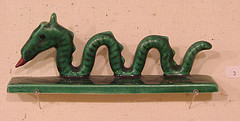
Okanagan Valley, British Columbia (#9) is the location of Lake Okanagan, the huge watery home of Ogopogo, which fellow Cryptomundo blogger John Kirk writes about often on these pages.
Portland, Oregon (#7), down the road from Mt. Hood, is the gateway to the PNW’s Bigfoot Country.
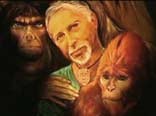
Perhaps you can visit Zurich on your way to the archives of Bernard Heuvelmans’ massive cryptozoology library, which are now housed at the Museum of Zoology of Lausanne. Virgin Gorda might have some marine cryptid mysteries. If people know of specific and clear cryptolinks on the list of twelve above, share your info in the comments below.
Stay tuned and check back for more lists to come, throughout December.
About Loren Coleman
Loren Coleman is one of the world’s leading cryptozoologists, some say “the” leading living cryptozoologist. Certainly, he is acknowledged as the current living American researcher and writer who has most popularized cryptozoology in the late 20th and early 21st centuries.
Starting his fieldwork and investigations in 1960, after traveling and trekking extensively in pursuit of cryptozoological mysteries, Coleman began writing to share his experiences in 1969. An honorary member of Ivan T. Sanderson’s Society for the Investigation of the Unexplained in the 1970s, Coleman has been bestowed with similar honorary memberships of the North Idaho College Cryptozoology Club in 1983, and in subsequent years, that of the British Columbia Scientific Cryptozoology Club, CryptoSafari International, and other international organizations. He was also a Life Member and Benefactor of the International Society of Cryptozoology (now-defunct).
Loren Coleman’s daily blog, as a member of the Cryptomundo Team, served as an ongoing avenue of communication for the ever-growing body of cryptozoo news from 2005 through 2013. He returned as an infrequent contributor beginning Halloween week of 2015.
Coleman is the founder in 2003, and current director of the International Cryptozoology Museum in Portland, Maine.

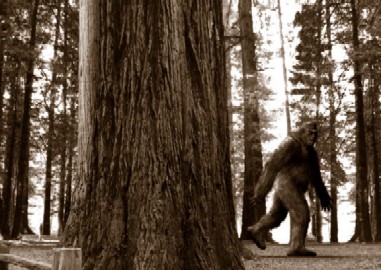









hey loren, good morning wow this a wonderful list about sasquatch & other cryptozoology animals as well. thanks bill 🙂
Gerald Durrell? Hmmm…I read several of his books when I was a kid. Now that you mention it, yeah, it could well be that reading those helped fuel my interest in this kind of thing! Thanks for the memory nudge, Loren!
I would be surprised if MacKinnon and Rabinowitz did not turn up somewhere on the conservationist list. Neither would call themselves a cryptozoologist, but both have been vital in demonstrating we don’t know all the species of the world, or even the sizable land mammals.
You’ve done it again with this outstanding list. I would love to visit Heuvelman’s Cryptozoology Library as he was the first person to pique my interest in cryptozoological mysteries with that wonderful book “On the Track of Unknown Animals.” Your books, as well as others, continue to maintain that interest. Keep them coming and thanks Loren!
In regards to #12 Portland, Maine I had lived there in the mid-eighties and enjoyed it very much. I had read about Cassie and boated on beautiful Casco Bay but never caught a glimpse of her. When was the International Cryptozoology Museum originally open? It’s been a awhile since I was last there but do intend to visit again sometime next year and make it a point of checking out the museum.
Thanks for this Loren, looking forward to more lists. Number 4 on the Eco-hero list, Sir David Attenborough, also has cryptolinks. One of his early documentaries featured many a creature.